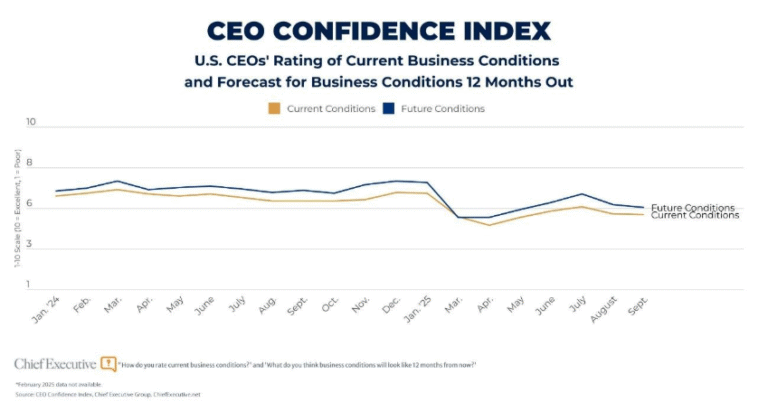
 In an earlier piece, we examined the four questions leaders need to ask and answer in order to make work-from-home successful. Below, five recommendations for replacing traditional, outdated modes of management with leadership approaches designed to work remotely.
In an earlier piece, we examined the four questions leaders need to ask and answer in order to make work-from-home successful. Below, five recommendations for replacing traditional, outdated modes of management with leadership approaches designed to work remotely.
Everything runs downstream from leadership, so if WFH in any form is going to work, it has to begin with the people in the C-suite, senior executives and departmental managers. Time to start thinking like a picky diner in a restaurant and develop a taste for more effective substitutes to the more common top-down management approaches:
1. For top-down authority, substitute “regulated autonomy.” At JumpCrew, tools like sales dashboards gamify quantitative aspects of performance—i.e., numbers of calls and talk time—and allow teams to self-manage their pace relative to their peers. Leaders have to hone their emotional intelligence to implement the right balance of check-ins and oversight to allow people to self-direct but still hold them accountable. Great organizations typically don’t need leadership to manage activities because our teams are smart enough and motivated to look at them on their own. We need leadership to think about improving the behavioral outcomes of the actions and provide the feedback that improves products and process.
2. For hierarchy, substitute “democracy.” The hierarchy still exists in a WFH, but it’s much less apparent. Virtual all-hands and casual meetings where people are live chatting alongside the speaker empower engagement, help everyone feel part of the decision-making process, and break down barriers of communication between individual contributors and management. Leveling the communication playing field encourages collaboration, demonstrates leadership at every level of the org, and promotes the emergence of new leaders. For example, one of our warm-up exercises for Circles is to ask everyone to share their “weather report,” only this weather is internal. How are they feeling? What’s their energy? What’s their mood? That might not appear to matter in a F2F office, but it’s crucial in WFH when it’s easy to feel like you’re working in a silo.
3. For Tom Peters’s “management by walking around,” substitute “psychological safety.” To some individual contributors, managers walking around is the anxiety-inducing equivalent of management-by-ambush. Now, all communication is either scheduled or transparent, so it’s easy for employees working at home to control the engagement and not be surprised and off-balance. Using tech, they can also maintain communication “back channels” that let them chat with colleagues during meetings, and that’s something you should both encourage and ensure are safe from eavesdropping. Either you trust your people or you don’t. In the end, there is a fine line between motivating outreach and intrusive coercion. Each organization and leader has to identify where that line is for themselves.
4. For a rigid schedule, substitute “flexibility and patience.” Most leaders hate this one because they loathe the notion that kids, dogs, and Amazon deliveries require urgent attention at times during the workday. But they do. In this new world, time is fluid while both deliverables and sometimes deliveries are not. The old markers that cued us to the passing of the workday—the morning meeting, lunch, afternoon coffee, 5:00 p.m.—are history. Now, work is about managing distractions. Also, it’s equally important for the organization to respect people’s privacy and home lives as much as you expect them to respect the company’s needs. Spontaneous calls and meetings can be easily precipitated with an unobtrusive Slack or text: “Can you talk now?”
5. For every man for himself, substitute “help with the home office.” Cox Communications, an Atlanta-based telecom with about twenty thousand employees, invested millions of dollars to help every worker get what they needed to trick out their home workspace. That’s a smart move. Downtime, especially in sales, is murder; your WFH transition must minimize it. As part of the recruitment process, teams should confirm that the candidate has a quiet and professionally acceptable space with sufficient bandwidth. Equally important is the org’s responsibility to make sure every one of your people has the computer, monitors, keyboard and office equipment they need—even a comfortable chair. That’s a small price to pay for continuity of business.
Above all, connection remains a high priority. Water cooler talk as we remember it is gone. It’s harder in WFH for your people to walk over and tap you on the shoulder when they need help and advice, so the risk is that they don’t ask. Therefore, it’s more important than ever for leaders to create thoughtful opportunities to build meaningful connections with their teams outside of work meetings—and especially outside of virtual “happy hours.” Those became a thing during quarantine, but they add little or no value unless they’re thoughtfully constructed.
It’s a better use of your time to put together a small team and think through activities that let small online groups open up, share their hobbies and interests, and take their work relationships deeper than they could in virtual meetings.
 Excerpted with permission from REMOTE LEADERSHIP (Amplify Publishing, Sept. 2021), now available from Amazon, Barnes & Noble, and Amplify Publishing. The debut book by David Pachter is an in-depth look at what it means to be a leader at a time when this conventional role is being challenged, and how to transform an organization into a stronger and more impactful community.
Excerpted with permission from REMOTE LEADERSHIP (Amplify Publishing, Sept. 2021), now available from Amazon, Barnes & Noble, and Amplify Publishing. The debut book by David Pachter is an in-depth look at what it means to be a leader at a time when this conventional role is being challenged, and how to transform an organization into a stronger and more impactful community.




Chief Executive Group exists to improve the performance of U.S. CEOs, senior executives and public-company directors, helping you grow your companies, build your communities and strengthen society. Learn more at chiefexecutivegroup.com.
0

1:00 - 5:00 pm
Over 70% of Executives Surveyed Agree: Many Strategic Planning Efforts Lack Systematic Approach Tips for Enhancing Your Strategic Planning Process
Executives expressed frustration with their current strategic planning process. Issues include:
Steve Rutan and Denise Harrison have put together an afternoon workshop that will provide the tools you need to address these concerns. They have worked with hundreds of executives to develop a systematic approach that will enable your team to make better decisions during strategic planning. Steve and Denise will walk you through exercises for prioritizing your lists and steps that will reset and reinvigorate your process. This will be a hands-on workshop that will enable you to think about your business as you use the tools that are being presented. If you are ready for a Strategic Planning tune-up, select this workshop in your registration form. The additional fee of $695 will be added to your total.

2:00 - 5:00 pm
Female leaders face the same issues all leaders do, but they often face additional challenges too. In this peer session, we will facilitate a discussion of best practices and how to overcome common barriers to help women leaders be more effective within and outside their organizations.
Limited space available.

10:30 - 5:00 pm
General’s Retreat at Hermitage Golf Course
Sponsored by UBS
General’s Retreat, built in 1986 with architect Gary Roger Baird, has been voted the “Best Golf Course in Nashville” and is a “must play” when visiting the Nashville, Tennessee area. With the beautiful setting along the Cumberland River, golfers of all capabilities will thoroughly enjoy the golf, scenery and hospitality.
The golf outing fee includes transportation to and from the hotel, greens/cart fees, use of practice facilities, and boxed lunch. The bus will leave the hotel at 10:30 am for a noon shotgun start and return to the hotel after the cocktail reception following the completion of the round.